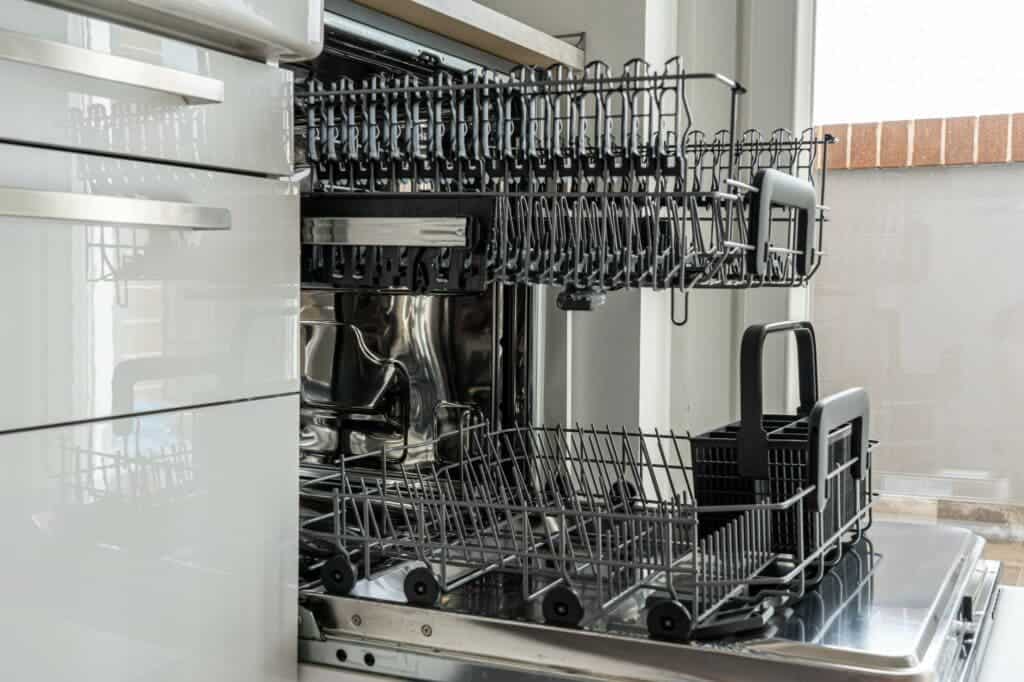Using a dishwasher might seem easier than scrubbing your plates by hand, but they also have their drawbacks. While dishwashers use less water than doing the dishes by hand, they do use electricity and release potential pollutants down the drain. They also don’t always kill all the harmful microorganisms that lurk on unwashed tableware. But the last part could soon be solved.

Researchers from the Technical University of Dortmund and the Technical University of Munich modelled a simplified dishwasher that uses hot steam to clean instead than hot water and soap. Computer simulations suggested that this superheated steam dishwasher could kill bacteria on plates in tableware in just 25 seconds.
“The use of superheated steam in dishwashers to reduce water consumption and cleaning time without the use of chemical cleaning agents has great future potential for restaurants, hotels, and hospitals,” the researchers wrote. “In addition to the removal of food residues on dishes, microbiological safety also plays an important role.”
Upgrading dishwashers
While dishwashers might get plates spotless, they’re probably packed with bacteria and fungus, studies have found. Microbes are everywhere, including the human body, so it’s no surprise that a kitchen appliance hosts them. While this is unlikely to cause problems for most people, it can be particularly dangerous for people with conditions that weaken their immune defenses.
Dishwashers are also problematic in terms of their environmental footprint. They contribute to greenhouse gas emissions in the manufacturing, shipping, and installation processes. Then, they use natural gas or electricity to heat the water used and on average use about 15 liters of water and one kilowatt-hour of energy per load. The water usage may be efficient, but the electricity — not so much.
Superheated steam dishwashers could then be a more effective, environmentally friendly solution, the researchers say. When steam reaches a high temperature, it becomes “superheated,” meaning water droplets evaporate so it’s purely dry and gaseous. In this form, it can transfer much more heat than conventional steam.
In their study, the researchers simulated a dishwasher that could use superheated steam on a computer. The device looks like a box with side walls, a top opening and a nozzle at the bottom. A plate covered with a strain of bacteria was placed above the nozzle. Once it reaches a certain temperature, the microorganisms are destroyed.
“Steam comes out of the nozzle at a very high velocity. We can see shocks, and the turbulent flow that is created has eddies and vortices,” author Natalie Germann of the Technical University of Dortmund said in a statement. “We also include heat transfer, which shows how the heat changes in the simulation box and the condensation on the solid surfaces.”
The researchers used the bacteria Geobacillus stearothermophilus for their study, which can cause food to spoil and can survive in temperatures above those that regular dishwashers reach. After two seconds of the simulation, about 50% of the bacteria were dead. After 25 seconds, their concentration on the plate dropped to zero.
While the simulation was very fast to destroy the bacteria, actual applications of the dishwasher would include more than one plate and then require more time. However, the researchers said it would still be faster and more effective than current dishwashers. They would initially cost more but would pay off in time with savings in water and electricity.
“Our study helps determine the strength of the shocks, the position of the shocks, and the vortices that are created inside the dishwasher,” author Laila Abu-Farah, of the Technical University of Munich, said in a statement. “These things are very important for arranging the items or objects inside the dishwasher and the placement and orientation of the nozzles.”
The study was published in the journal Physics of Fluids.


